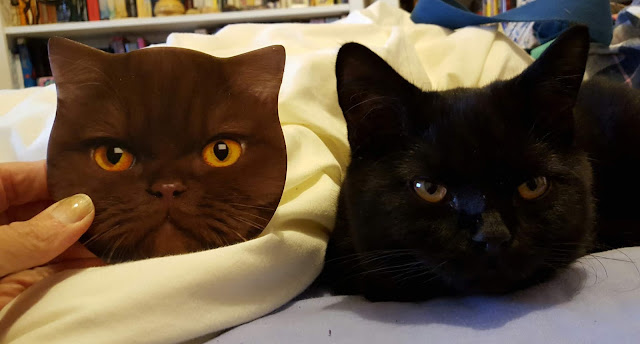Planting for the Future
 |
| Harry and his evil twin. He was not impressed. |
We are acutely aware that the top 50 acres of the farm is basically barren. Over the years wallabies and stock have denuded it and the wind charges up the valley straight to the top of the hill and blasts the house. So we're in the middle of planting trees and hedging plants and leafy corridors for the birds to control a little of that impact, improve the soil and in general improve our experience of living in this beautiful place.
So far we've planted:
- London Plane trees
- Maples
- Luma Apiculata - native hedging plants
- Pittosporum Tasman Ruffles - native hedging plants
- Evergreen Poplar
- deciduous Poplar
- oak
- silver birch
- grapefruit
- Tahitian Lime
- Imperial mandarin
- apple
- Viburnum
I love London Plane trees and they have been used extensively in rural NSW and even Perth W.A. as street trees because they are, believe it or not, drought resistant. Their shade is lovely and can reduce temperatures in built up areas dramatically, aside from their sheer beauty, of course. As strong, tall, trees with a full growth habit they are ideal as windbreaks and shade trees. Ideal for us in summer and winter. So we've planted them on the Southern side, where they will hopefully provide protection to the house, particularly when the large forest on that side is harvested. We've also planted Maples and are about to plant poplars.
"Why are you planting exotics?" I hear you say. Well, we like them! Even deciduous poplars, planted close together, provide excellent protection from the wind even in winter. And they are much less of a fire hazard, not containing the flammable oils of most Australian native trees such as Eucalyptus. I love to look out at my garden and see a variety of colour too, so these will provide Autumn splendour and fabulous greenery in Spring. We've planted some natives - Luma Apiculata bushes as a wind break, and Pittosporum Tasman Ruffles bushes, also as windbreaks. They have lovely small leaves and grow thick and dense, making the ideal hedge. Very good for lambing season.
 |
 |
| Silver Birch on Bumblewood Hill |
 |
| Ignoring his lovely bed ON TOP of the desk |
What we're really doing is planting for the future. Most of the trees won't be full height for at least 15 years, maybe more. We might never see this large 'garden' in its maturity, but the next generation will. Therefore I am keenly aware of what it will look like 50 years from now and try to imagine it in the scope of my planning. Very difficult! We want to preserve the fantastic view as much as possible, while providing shelter for stock and wildlife, especially the birds, and windbreaks for the house. The idea is to link green corridors from the bottom 50 acres up to the top 50 acres and around the house. The Blue Wrens and Flame Robins will definitely thank us!
Today we drove around looking at fence lines and discussing what changes to make to maximise the water resources we have and provide lots of smaller paddocks in which to move the stock on a regular basis. Already Flossie is improving in her herding skills! The idea is to have smaller areas that are rested frequently, rather than a large area that is never left alone. We are blessed with underground water that bubbles up to the surface in springs all over the property, giving us four fresh water dams and many little creeks and crevices. Making sure each paddock has its own supply of water is crucial and cuts back on the plumbing needed to get water there artificially, pumped from the house.
 |
| Southern Boobook Owl |
We want the land to recover, rejuvenate and flourish so that every living thing that relies upon it, including ourselves, can thrive.
By the way! I was dropped off the other night by my lovely neighbour Kerry (we'd been out to Penguin) and there was an owl, clear as you please, sitting on the fence post. I am pretty sure it's the same one that has been roosting in Hubby's big red shed. I looked it up and it's a Southern Boobook Owl. Fabulous!


Comments
Post a Comment